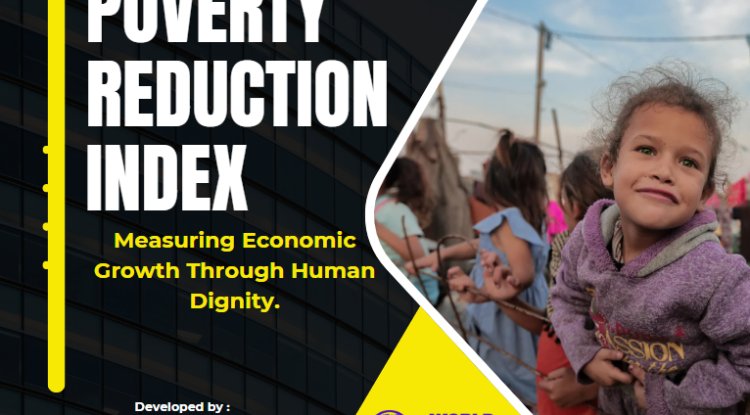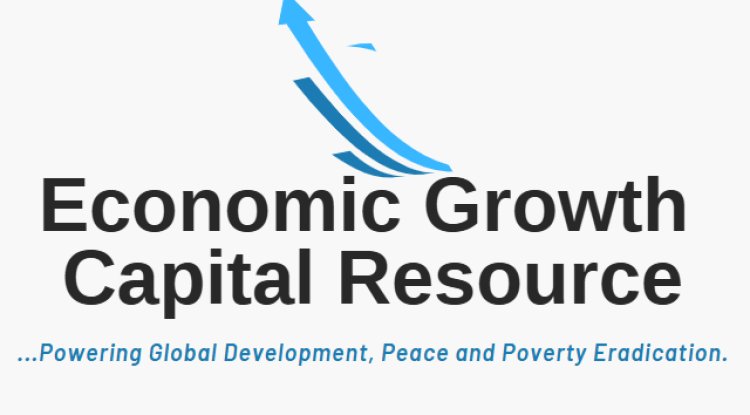SUB-NATIONAL DEVELOPMENT INSTITUTIONS
The concept of Sub-National Development Institutions (SNDIs) represents a pivotal framework within the regional and local economic growth domain geared towards fostering sustainable development at sub-national levels. These institutions, often established by governments or regional authorities, play a crucial role in orchestrating targeted strategies, policies, and initiatives that address the unique challenges and opportunities faced by specific geographic regions or local communities.

SNDIs signify a departure from the traditional top-down approach to development, emphasizing a more decentralized and context-specific methodology. As an integral component of the broader governance structure, SNDIs are catalysts for socioeconomic progress by tailoring interventions to address regional disparities, optimize resource allocation, and empower local stakeholders. Their establishment recognizes that effective development solutions require nuanced, region-tailored strategies that resonate with a given area's distinct socio-cultural, economic, and environmental attributes.
One of the primary objectives of SNDIs is to stimulate economic growth and innovation within sub-national territories. These institutions often collaborate with local businesses, educational establishments, and community groups to identify key sectors with growth potential, encourage entrepreneurship, and drive investments. By nurturing homegrown industries and capitalizing on local expertise, SNDIs facilitate a more inclusive and self-sustaining development trajectory that mitigates overreliance on external sources.
SNDIs enhance infrastructure and public services, bolstering the overall quality of life in sub-national regions. Through strategic planning and targeted investment, these institutions address critical transportation, healthcare, education, and utilities gaps. This all-encompassing strategy creates an atmosphere for human growth and draws in potential investors and companies, creating a positive development cycle.
SNDIs play a pivotal role in promoting participatory governance and community engagement. By involving local residents and stakeholders in decision-making processes, these institutions ensure that development strategies align with the genuine needs and aspirations of the population. This bottom-up approach enhances the effectiveness of interventions and cultivates a sense of ownership and responsibility among community members, fostering social cohesion and sustainable development outcomes.
The rationale for decentralized finance institutions like SNDIs lies in their ability to engender multi-faceted benefits. These institutions empower sub-national regions by providing them with financial autonomy. This decentralization of financial decision-making allows regions to tailor their economic strategies in alignment with their unique strengths, resources, and developmental priorities.
Let's analyze these institutions individually and their roles in accelerating sub-national development, complementing national-level efforts. Additionally, we'll explore how these sub-national institutions' cumulative impact can drive national and international economic growth while also hastening the eradication of poverty from the grassroots level.
Unveiling Sub-National Financial Entities
Sub-national financial institutions, often called local or sub-national governments, hold a crucial position in fostering regional economic expansion and effective governance. These entities are the administrative bodies that operate below the central or national government, managing finances, delivering public services, and implementing policies tailored to the unique needs of their specific region. They encompass various bodies, including state governments in federal systems, provinces, municipalities, and special administrative regions.
One of the primary functions of sub-national financial entities is managing public finances at the local level. These entities have the authority to collect taxes, fees, and other revenue sources, which are then utilized to fund public services such as education, healthcare, transportation, and infrastructure development. By exercising fiscal autonomy, sub-national governments can allocate resources according to local priorities, fostering economic development closely aligned with regional needs.
Furthermore, sub-national financial entities are critical in enhancing regional economic growth. These entities can stimulate economic activity, attract investments, and create job opportunities by tailoring policies and initiatives to address specific local challenges and opportunities. For example, a sub-national government might establish tax incentives for businesses in a particular industry to encourage growth, thereby boosting the local economy and increasing employment rates.
In addition to economic growth, sub-national financial entities contribute to effective governance. They link directly between citizens and government, facilitating citizen participation and engagement in decision-making processes. This decentralized approach allows for more responsive governance, as local officials are often more attuned to the needs and preferences of their constituents than national policymakers. As a result, sub-national governments can implement policies that are better aligned with the aspirations of their communities.
Maintaining proper financial stewardship, promoting transparency, and upholding accountability is vital to prevent the misallocation of resources and guarantee the efficient utilization of public finances. Furthermore, fostering skills development among local officials and administrators through capacity-building programs can strengthen the capacity of sub-national governments to create and implement impactful policies.
Sub-national financial entities form the backbone of regional economic growth and efficient governance. Through fiscal autonomy, tailored policies, and citizen engagement, these entities promote economic development while meeting local needs. Their role is crucial in achieving balanced and sustainable progress, making them a vital component of the broader governmental framework.
Sub-National Development Banks
Sub-National Development Banks, sometimes known as State Development Banks or Regional Development Banks, are financial institutions operating at a sub-national level, targeting the unique needs and aspirations of local communities, provinces, or states. They act as intermediaries between local governments, private enterprises, and development agencies, orchestrating a symphony of progress that resonates throughout the region.
These banks are more than just financial institutions; they are transformation engines. SNDBs extend financial services, including loans, credit, and grants, to stakeholders, including small and medium-sized enterprises (SMEs), local infrastructure projects, and social enterprises. Their fundamental objective is to mobilize capital from within and outside the region and judiciously allocate it to projects that foster sustainable development, create jobs, and uplift communities.
In the intricate tapestry of global development, Sub-National Development Banks (SNDBs) emerge as the unsung heroes, the catalysts of change at the grassroots level. These financial institutions are purpose-built to channel resources, expertise, and innovation directly into the heart of local communities, driving sub-national development to complement national efforts. Their impact ripples outward, ultimately converging to fuel national and even international economic growth while hastening the end of poverty from the roots.
The Role of Sub-National Development Banks
At first glance, Sub-National Development Banks might appear as mere financial entities, yet beneath the surface lies a dynamic force for change. These banks function as transformation engines, channeling financial services and resources with surgical precision to uplift localities and foster holistic development. Their scope extends beyond traditional financial intermediaries to become social, economic, and infrastructural advancement architects.
A Multi-faceted Approach to Impact
Sub-National Development Banks take a multi-faceted approach to catalyze progress across diverse domains:
- Fostering Entrepreneurship and SME Growth:
Sub-National Development Banks (SNDBs) emerge as dynamic incubators for grassroots entrepreneurship and the exponential growth of small and medium-sized enterprises (SMEs). Armed with a profound understanding of regional dynamics, these banks strategically cultivate an ecosystem where entrepreneurial dreams flourish into tangible realities.
At the heart of their mission lies a keen recognition that SMEs are not just economic entities but the lifeblood of local economies. SNDBs act as nurturers, providing a range of bespoke financial solutions meticulously tailored to SMEs' unique needs and aspirations. Through accessible loans, credit lines, and grants, these banks infuse the vital capital needed for budding ventures to sprout, mature, and diversify.
Beyond monetary assistance, SNDBs foster an environment of mentorship and knowledge sharing. They harness their extensive network of industry experts, mentors, and advisors to guide entrepreneurs through the intricacies of business development, marketing strategies, and operational efficiency. This multi-faceted support empowers SMEs to innovate, pivot, and scale, catalyzing a ripple effect of job creation, localized economic growth, and enhanced competitiveness on the global stage.
In doing so, SNDBs cease to be mere financial institutions; they metamorphose into cradles of empowerment, where dreams are bankrolled and aspirations are realized. This synergy between financial backing, expert guidance, and visionary zeal encapsulates the transformative essence of Sub-National Development Banks in nurturing entrepreneurship and propelling SMEs to the forefront of economic vitality.
2. Nurturing Local Infrastructure:
In the intricate tapestry of development, infrastructure emerges as the foundation upon which progress is woven. Sub-National Development Banks (SNDBs) are the architects of this transformative bedrock, orchestrating the financing of critical local infrastructure projects that transcend the mundane and redefine the possibilities of communities.
SNDBs, armed with their acumen and foresight, recognize that robust infrastructure is the conduit through which socioeconomic prosperity flows. They embark on a mission to breathe life into visionary transportation networks, dynamic energy facilities, and urban metamorphoses. These banks propel communities into an era of elevated living standards through strategic funding and meticulous project management.
This profound metamorphosis has multi-faceted impacts. As SNDBs channel resources into infrastructure, the tangible enhancements ripple outward, enriching lives and attracting the siren call of investments. The fabric of connectivity woven by upgraded transportation networks fuels accessibility, unlocking new avenues for trade, employment, and cultural exchange. Masterfully nurtured by SNDBs, energy facilities electrify regions with unprecedented potential, galvanizing industries and empowering homes.
The urban landscapes, meticulously shaped by SNDBs, transcend concrete and steel; they become canvases of innovation and comfort. By enhancing the living experience, these revitalized urban spaces lure investors, sparking a dance of economic vibrancy that transcends boundaries.
Essentially, Sub-National Development Banks become the magicians of transformation, conjuring realms where infrastructure ceaselessly nurtures growth. This strategic synergy between financial prowess and visionary thinking elevates residents' quality of life and ignites a virtuous cycle of prosperity, where thriving communities become beacons of progress and promise.
3. Cultivating Social Enterprises:
Sub-National Development Banks (SNDBs) emerge as enlightened champions of societal well-being, embarking on a transformative journey to cultivate and nourish social enterprises. Beyond conventional financial mechanisms, these banks become potent catalysts for positive change by strategically investing in ventures that tackle pressing social challenges head-on.
With an unwavering social conscience, SNDBs recognize that sustainable development transcends economic growth and encompasses the very fabric of human existence. They venture into education, breathing life into initiatives that empower minds and broaden horizons. Through strategic funding, they kindle the flames of innovation in healthcare, fostering access to quality medical services that resonate with compassion and efficacy.
Affordable housing becomes a canvas upon which SNDBs paint visions of inclusivity and dignity. By injecting capital into these transformative housing projects, they lay the foundation for thriving communities where families find solace, security, and a sanctuary to flourish.
In an age where environmental stewardship is paramount, SNDBs wield their financial prowess to nurture environmental initiatives that promise a sustainable future. Renewable energy projects, ecological preservation endeavors, and green technologies bloom under their watchful eye, propelling regions toward a harmonious coexistence with nature.
This synergy between financial investment and social commitment generates tangible financial returns and infuses society with a ripple of positive impact. SNDBs, as custodians of social enterprises, inspire a symphony of change reverberating across generations. Through their strategic investments, these banks transcend conventional boundaries, becoming architects of a world where financial prosperity walks hand in hand with compassionate progress.
Mobilizing Capital for Sustainable Development
Sub-National Development Banks possess a dynamic mission at their core: to orchestrate a symphony of sustainable development by skillfully orchestrating the flow of capital. As financial maestros, these banks artfully bridge the chasm between local aspirations and the means to fulfill them, propelling regions into the limelight of progress.
SNDBs are virtuoso conductors, wielding financial expertise to draw melodious notes from the local economic landscape. They skillfully tap into the vibrant rhythm of local financial markets, harmonizing savings, deposits, and investments from the very heart of the region. When harmoniously orchestrated and strategically directed, these economic refrains compose a resonant reservoir, funding a crescendo of transformative projects that touch lives and shape futures.
Yet, the symphony doesn't end there. SNDBs, like enchanting sirens, draw the attention of external financiers with their virtuosity. As the applause for impactful projects reverberates, these banks attract a global audience of investors, enticed by the symphony of positive change they have orchestrated. This influx of external investment augments the rhythm, amplifying the cadence of development and propelling communities to new heights of prosperity.
In this grand development performance, Sub-National Development Banks wield their financial instruments with finesse, transforming what might have remained dormant regions into vibrant crescendos of progress, where every note struck reverberates with the promise of a brighter tomorrow.
A Path to Inclusive Growth
Sub-National Development Banks hold a unique key to unlocking inclusive growth and prosperity:
1. Customization for Local Needs: Unlike national-level institutions, SNDBs possess an intimate understanding of the unique challenges and opportunities that define a region. This familiarity allows them to customize financial solutions that precisely address local needs, ensuring efficient resource allocation and maximizing impact.
2. Local Empowerment: SNDBs empower local governments and communities through their operations. By providing access to financial resources and expertise, these banks facilitate the realization of locally-driven development visions, bolstering citizen engagement and ownership.
3. Resilience and Risk Mitigation: Sub-National Development Banks inherently understand the region-specific risks development projects might encounter. This localized insight enables them to implement risk mitigation strategies, minimizing setbacks and enhancing project sustainability.
Sub-National Development Banks are not mere stitches; they are vibrant threads that weave progress across every contour of a nation. Their ability to mobilize capital, nuanced understanding of local needs, and capacity to orchestrate transformational projects position them as indispensable partners in the journey toward sustainable, inclusive, and holistic development. With each investment, each partnership, and each venture, SNDBs amplify their impact, creating a harmonious symphony of progress that resonates not only within localities but also on the national and international stage, propelling us closer to the noble vision of eradicating poverty and fostering shared prosperity.
The Confluence of Sub-National and National Efforts
The synergy between Sub-National Development Banks and national-level institutions is akin to a harmonious duet, each note enhancing the other's melody. While national institutions lay down the policy framework and overarching strategies, SNDBs execute these visions at the grassroots level, with a nuanced understanding of local nuances.
1. Aligned Goals: SNDBs act as force multipliers, amplifying the impact of national development policies. Their localized approach ensures that national goals are translated into actionable plans that resonate with the aspirations of local communities.
2. Balanced Development: The convergence of sub-national and national efforts creates a balanced development landscape. It prevents regional disparities by ensuring that every corner of the nation benefits from growth, eradicating pockets of poverty, and fostering inclusive prosperity.
3. Risk Mitigation: Sub-National Development Banks possess an innate ability to manage risks specific to their region. This localized risk management reduces the chances of financial setbacks that could impede overall national progress.
Global Ripples of Prosperity
The true potential of Sub-National Development Banks comes to fruition when their localized impact converges on a grand scale, resonating not just at the national level but across borders. The synergy between these grassroots institutions and broader national and international economic mechanisms creates a wave of prosperity that uplifts entire nations and regions.
1. Amplified Economic Growth:
As SNDBs propel local economies, the cumulative effect enhances national economic growth. Thriving regional businesses contribute to increased tax revenues, higher employment rates, and a robust financial ecosystem bolsters a nation's global standing.
2. Attracting International Investments:
The success stories scripted by Sub-National Development Banks become magnets for international investments. When investors witness the tangible transformation that SNDBs bring about, they are more inclined to invest in the broader national economy.
3. Enhanced Export Competitiveness:
Local enterprises nurtured by SNDBs often evolve into global players. As these enterprises expand, they contribute to a nation's export competitiveness, enhancing its presence in the global market.
4. Accelerated Poverty Eradication:
The collective efforts of Sub-National Development Banks, national institutions, and global partners create a formidable front against poverty. As grassroots development flourishes, the foundation for poverty eradication strengthens, accelerating progress toward this noble goal.
In the grand tapestry of global development, Sub-National Development Banks are the threads that weave prosperity from the bottom up. Their localized focus, aligned with national and international efforts, holds the potential to accelerate the end of poverty while propelling nations toward unprecedented economic growth. As these institutions continue redefining development contours, they stand as beacons of hope, lighting the path to a future marked by shared prosperity and boundless possibilities.
Sub-National Reserve Banks
Sub-National Reserve Banks (SNRBs) represent specialized financial institutions operating at a sub-national or regional level within a more extensive federal or national financial framework. These institutions are distinct entities from central banks but share a common purpose: to oversee and regulate monetary policy, manage reserves, and promote financial stability within their designated geographical areas. SNRBs wield a unique authority that allows them to tailor monetary strategies and interventions to address their specific regions' distinct economic, social, and developmental needs.
Unlike their national-level counterparts, SNRBs are finely attuned to the nuances of local economies, cultures, and challenges. They are responsible for maintaining price stability, managing interest rates, and regulating financial institutions within their jurisdiction. SNRBs also often engage in currency management, foreign exchange operations, and the issuance of regional currency if authorized.
The role of SNRBs extends beyond traditional monetary functions. At the heart of driving regional economic expansion, they assume a pivotal role, offering specialized financial aid, propelling investment, and cultivating a conducive atmosphere for local enterprises. Sub-National Reserve Banks (SNRBs) collaborate harmoniously with local authorities, industries, and communities, jointly crafting and executing policies that fuel sustainable growth and effectively tackle region-specific imperatives.
Sub-National Reserve Banks serve as localized monetary and financial stability guardians, steering their regions toward prosperity while aligning their actions with broader national economic strategies. Through their distinct vantage point, SNRBs contribute to a more responsive and tailored approach to economic governance, ensuring that local needs are met within the broader context of a unified and cohesive national financial system.
When it comes to economic development, Sub-National Reserve Banks (SNRBs) emerge as dynamic forces, orchestrating a symphony of progress within specific regions. These institutions, often operating within the framework of federal or national financial systems, play a pivotal role in catalyzing localized economic growth, nurturing industry-centric expansion, and fostering a complementary synergy with national-level institutions. As the guardians of financial autonomy and stability, SNRBs harmonize the delicate balance between regional aspirations and broader economic objectives, ultimately steering communities toward equitable prosperity and poverty eradication.
Localized Economic Growth Catalysts: Nurturing Vibrant Economies
At the heart of SNRBs' mandate lies their role as catalysts for localized economic growth. By wielding the levers of monetary policy and financial regulation, these banks stimulate investment, encourage entrepreneurship, and enhance economic resilience within their operational territories. SNRBs possess an intimate understanding of regional needs and opportunities, allowing them to tailor policies that fuel the engines of economic vitality.
SNRBs leverage their authority to provide targeted financial support to local businesses and industries. Through initiatives like preferential lending rates and tailored loan programs, these banks empower small and medium-sized enterprises (SMEs) to flourish, generating employment opportunities and bolstering income streams within the community. By nurturing a conducive business environment, SNRBs cultivate innovation and competitiveness, propelling their regions onto the global economic stage.
Balancing Autonomy and Financial Stability: Guardians of Economic Equilibrium
One of the most intricate challenges SNRBs navigate is striking the delicate equilibrium between autonomy and financial stability. While these institutions operate within a larger national framework, they possess a degree of independence that enables them to address region-specific economic dynamics. This autonomy is a double-edged sword, granting SNRBs the flexibility to respond to local exigencies while ensuring their actions align with broader monetary and fiscal policies.
SNRBs play a crucial role in harmonizing the interests of their regions with the stability imperatives of the national economy. By carefully calibrating interest rates, managing inflation, and supervising financial institutions, these banks avert the pitfalls of excessive regional divergence and contribute to a harmonious economic ecosystem. The collaborative dance between SNRBs and national-level central banks is an intricate ballet wherein the synchronized movements orchestrate a symphony of balanced growth and financial robustness.
Nurturing Industry-Centric Economic Expansion
SNRBs transcend their role as financial regulators to become architects of industry-centric economic expansion. These institutions identify key sectors with untapped potential and strategically allocate resources to fuel growth and innovation. By nurturing these industries, SNRBs stimulate job creation and position their regions as hubs of specialized expertise, attracting domestic and international investments.
Through partnerships with local businesses, research institutions, and government agencies, SNRBs facilitate knowledge exchange and technology transfer. They create an ecosystem where research and development thrive, spurring breakthroughs that drive industry competitiveness. This proactive engagement transforms SNRBs into enablers of industry clusters, each contributing to the larger mosaic of regional economic prosperity.
Complementary Synergy with National-Level Institutions
The synergy between Sub-National Reserve Banks (SNRBs) and national-level institutions exemplifies a harmonious alliance rooted in collaboration, not rivalry. This partnership transcends bureaucratic confines, forging a symbiotic bond essential for steering sustainable development. SNRBs seamlessly integrate with the broader national framework, becoming instrumental in achieving overarching economic objectives.
This cooperative endeavor extends beyond conventional mandates, as SNRBs wield their localized expertise to tailor strategies that mend regional disparities and amplify grassroots aspirations. By aligning regional intricacies with national ambitions, this partnership crafts a holistic approach that ensures prosperity permeates every corner of the nation. The result is a tapestry of progress, where mutual support and shared vision create an ecosystem wherein both entities flourish, propelling the nation towards a future of balanced growth and inclusive advancement.
Collaborative Impact on Widespread Development
SNRBs function as integral nodes in a vast network of economic development. By collaborating with national-level central banks, government agencies, and international organizations, these banks amplify their impact and the reach of their initiatives. This collaborative ethos creates a seamless flow of resources, expertise, and best practices that traverse administrative borders, enriching local communities and the nation.
Reinforcing National Economic Strategies: Fortifying the Pillars of Progress
The role of SNRBs extends beyond regional boundaries as they reinforce national economic strategies. These institutions align their policies with overarching national goals, acting as conduits that transmit the benefits of economic growth from regions to the heart of the country. The symbiotic relationship between SNRBs and national-level institutions fosters a dynamic feedback loop wherein localized successes contribute to realizing broader economic visions.
Facilitating Equitable Prosperity and Poverty Eradication
SNRBs stand as vanguards of equitable prosperity and poverty eradication. Their nuanced understanding of local challenges enables them to design interventions that target marginalized communities and underserved sectors. By strategically directing financial resources toward initiatives such as education, healthcare, and social infrastructure, SNRBs create a virtuous cycle of empowerment that uplifts the most vulnerable segments of society.
Sub-National Reserve Banks transcend their role as financial regulators, evolving into engines of localized economic growth, balanced autonomy proponents, and industry-centric expansion catalysts. Their complementary synergy with national-level institutions facilitates collaborative progress, reinforcing national strategies and facilitating equitable prosperity. Through their strategic policies and targeted interventions, SNRBs emerge as transformative agents, orchestrating a symphony of sustainable development that resonates within communities and echoes across nations.




















